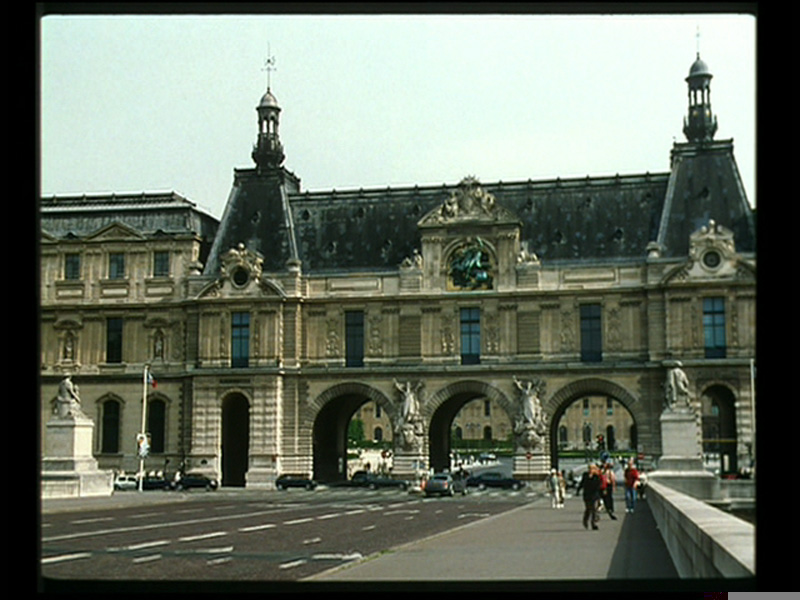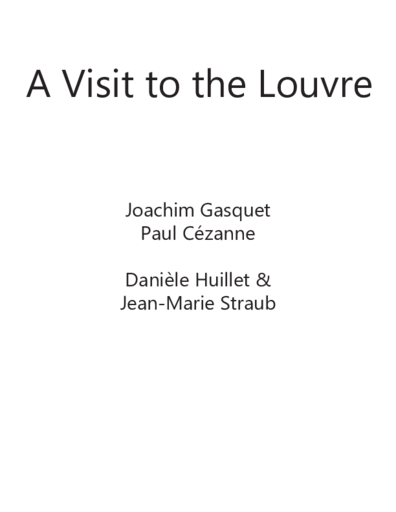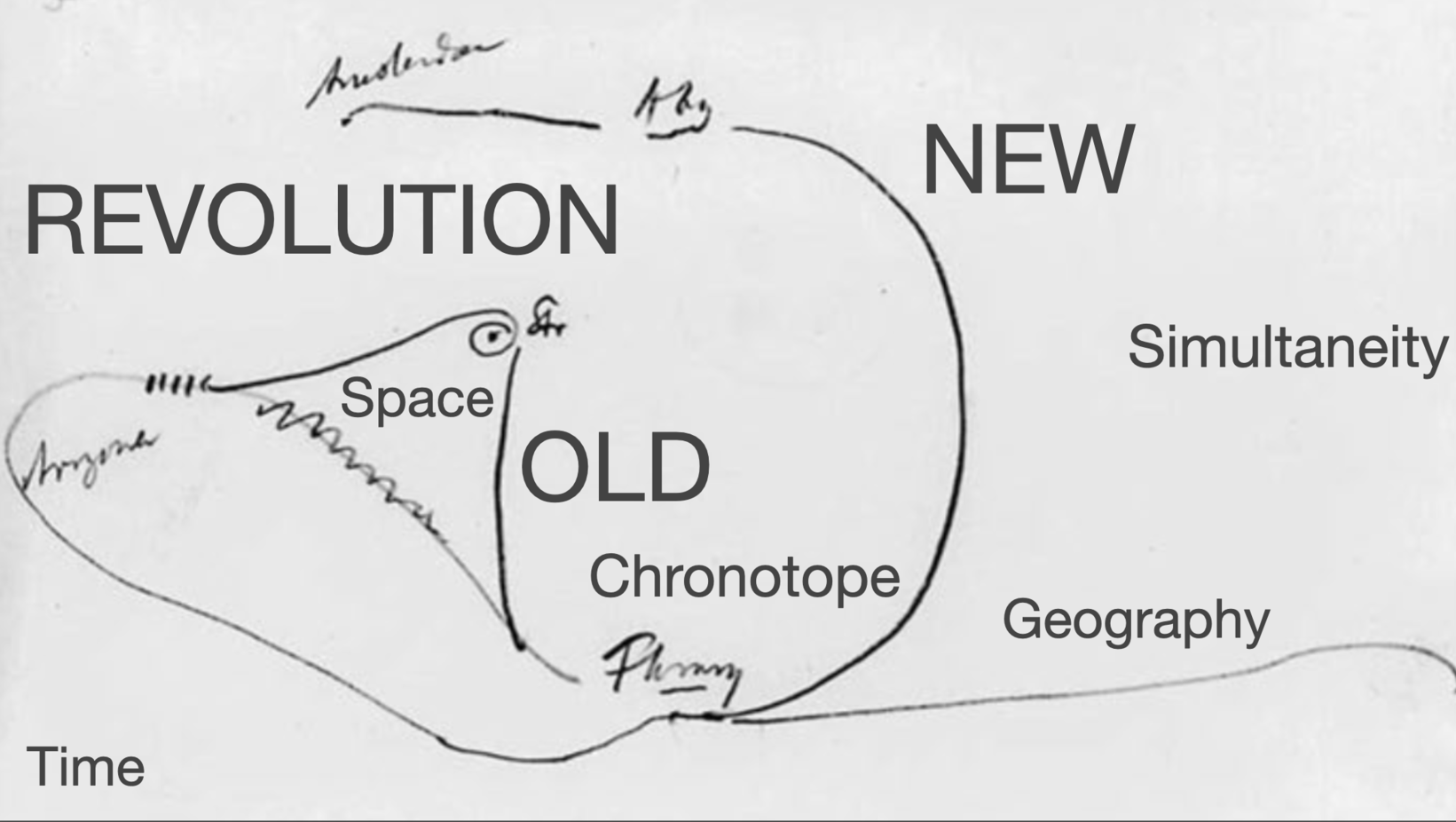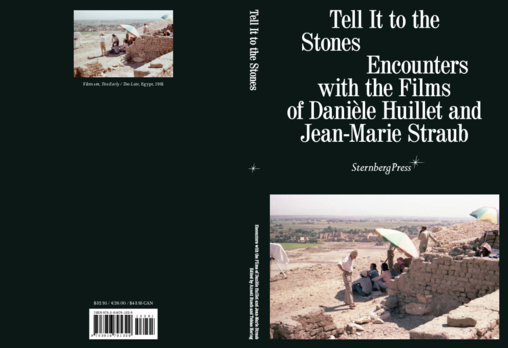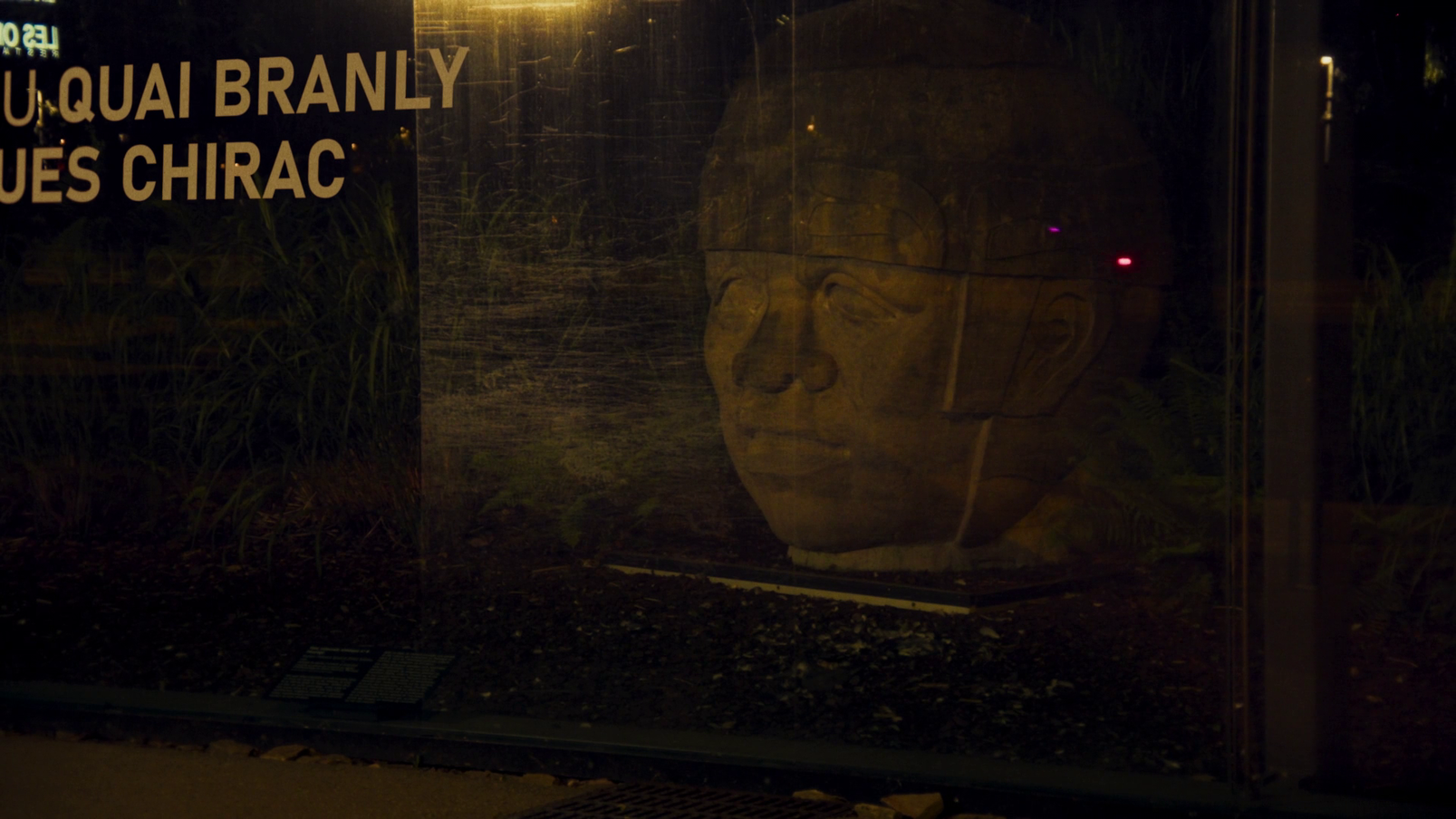The Louvre is the book from which we learn to read.
-Cézanne
It is never systematic, and it is never an image in the sense that one could frame an image. That’s what I want to say, if I say that it is always an idea, a thought. An image exists on the screen only if it is a thought. An idea that is made concrete.
-Jean-Marie Straub, Filmkritik, January 1971
Une Visite au Louvre (2004) is a companion film to Jean-Marie Straub and Danièle Huillet’s Cézanne (1989). The opening title of the later work indicates that it was inspired by Dominique Païni, then film programmer at the Louvre, in 1990. Like the earlier film, Une Visite au Louvre is also based on Joachim Gasquet’s book, Cézanne, specifically on the chapter entitled “Le Louvre,” which recounts Cézanne’s visit to the Louvre, accompanied by the young Gasquet.
Sally Shafto, introducing Visit auf Louvre > in: sensesofcinema.com
Mati Diop and the Cinema of Impossible Returns
Julian Lucas
<<< The Musée du Quai Branly is a long ark of a building perched over a garden, whose foliage screens the museum from its busy namesake thoroughfare on the banks of the Seine. Literally overshadowed by the Eiffel Tower, it houses more than three hundred thousand pieces of art from Africa, Asia, Oceania, and the Americas, most of them legacies of France’s colonial empire. Its opening, in 2006, was billed as an enlightened departure from the practice of exhibiting non-European works as anthropological specimens; the building’s architect, Jean Nouvel, described it as a place of spiritual regeneration, where the Western curatorial apparatus would “vanish before the sacred objects so we may enter into communion with them.” But the vibes within are less enchanting than uncanny. The cavernous main gallery is a maze of shadows and imitation mud walls, where masks look out from between oversized photographs of tropical vegetation. “I’ll never be familiar with this space,” Mati Diop said when we visited last month. “It’s like ‘The Matrix.’ ”
<<< Felwine Sarr, Bénédicte Savoy
The Restitution of African Cultural Heritage. Toward a New Relational Ethics
“...We pilfer from the Africans under the pretext of teaching others how to love them and get to know their culture, that is, when all is said and done, to train even more ethnographers, so they can head off to encounter them and ‘love and pilfer’ from them as well.”
Michel Leiris, Letter to his wife, September 19, 1931 (Michel Leiris, Miroir d’Afrique, Edited and Annotated by Jean Jamin, Paris: Gallimard, 1996, p. 204, note)
“The conservation of culture has saved the various African peoples from the attempts at erasing the history and soul of Africa’s peoples [...] and if it [culture] binds humans together, it also impels progress. This is the reason why Africa has gone to such great lengths and taken such care in recovering its cultural heritage, in defending its personality and tending to the flourishing of new branches of its culture.”
“Manifeste culturel panafricain”, Souffles, 16-17, 4th trimester, 1969, January-February 1970, p.9 and p. 13
On November 28, 2017, inside a packed amphitheater at the University of Ouaga 1, Professor Joseph Ki-Zerbo from the University of Ouagadougou, under the watchful eye of the president Roch Kaboré and those of several hundred Burkinabé students, the President of the French Republic verbally confirmed his decision to break with several decades of longstanding French practices and official discourses in terms of cultural heritage and museums: “Starting today, and within the next five years, I want to see the conditions put in place so as to allow for the temporary or definitive restitution of African cultural heritage to Africa.”1 Applause and whistling ensued. On Twitter, the Élysée hammered down the nail of the proclamation in real-time, tossing out the age-old metaphor of the museum as carceral space: “African cultural heritage can no longer remain a prisoner of European Museums.”
This proclamation was all the more unexpected given that only one year earlier, France had categorically refused to return even the smallest amount of objects of cultural heritage to Benin by virtue of the inalienability of public French art collections. This proclamation was inscribed within a much more general approach toward the emancipation of memory: during a visit to Algiers several months earlier, Emmanuel Macron had declared that colonization was “a crime against humanity”. “Colonization was a significant part of French history. It was a crime, it was crime against humanity, a true example of barbarism. And it is an example of this past history that we must have the courage to confront by earnestly apologizing to those toward whom we have committed these acts.” Never before had France, as a country, explicitly called colonization by its true name.
